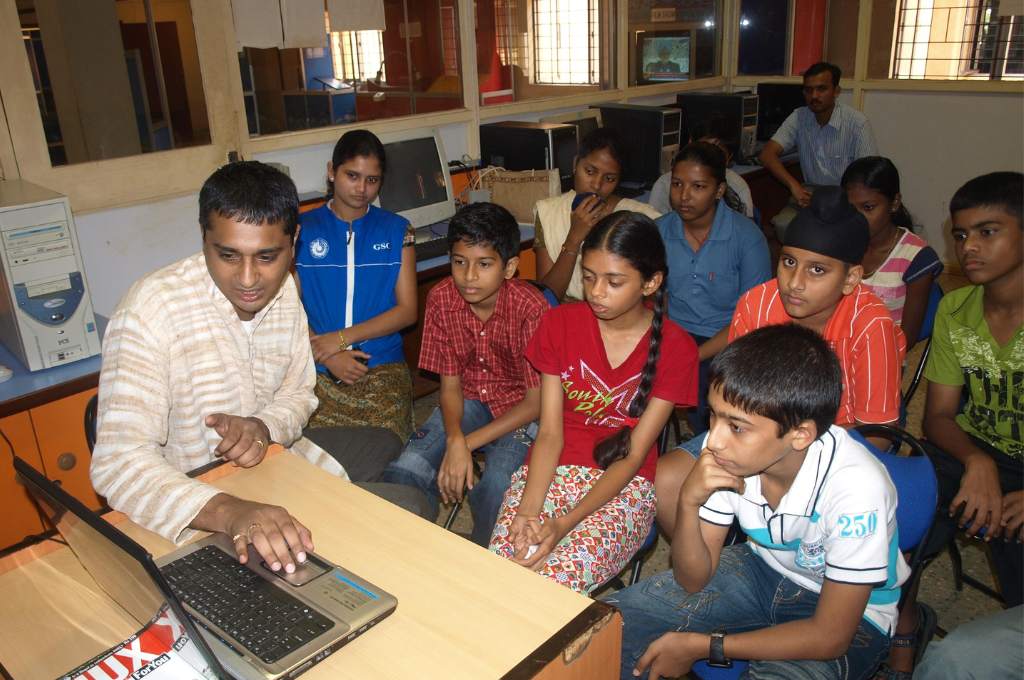During my close to 10 years of working in the education sector, one of the repeated observations I have had is that initiatives in this sector (and for that matter, many other social sectors) often tend to be ‘top down’: they are decided as a mandate that everyone should follow, and pushed through via orders from the top person of the company or senior government official, policy changes, funds from donors and large project teams on the ground.
There is nothing wrong with this per se. When managed and implemented well, this approach may have the potential to yield dramatic change in a short period of time. For example, through a top-down approach, it may be possible to ensure that every school in the country gets a separate girls’ toilet in a time-bound manner, that every teacher in a large school group reaches their classroom on time, that every classroom gets a technology resource, and so on.
It doesn’t always work
However, certain kinds of social change don’t get driven very well by a top-down approach. Most common among these is qualitative improvement in outcomes delivered by a system, especially where it involves human behaviour and competency change. For example, if we want an education system to deliver high-quality student learning outcomes and if we believe that teacher competencies are central to achieving this, it is unlikely that a top-down approach can ensure it in the long term.
This is because human behaviours and competencies take time to change and, even more so at scale, require individual motivation and intention on a sustained basis, and are typically hard to measure. This combination becomes very tough for a top-down programme to handle. Monitoring and tracking, which a top-down programme necessarily depends on, becomes not only very costly but also artificial.
Instead of counting ‘How many schools have separate toilets for girls?’ (which itself is not easy to count in a country of our size), you now need to count ‘How many teachers are actively engaging all the students in the classroom?’ The complexity of the task then makes us resort to artificial measures–like keeping track of ‘How many teachers attended a training on student engagement?’–which do not and cannot tell us much.
The ‘market’ can be a powerful force for change
Roughly speaking, I define ‘market-driven change’ as one where it is in the best interest of each individual or entity to operate differently. That is, the different way of working leads to rewards or benefits for each involved individual or entity. Further, the rewards themselves come ‘automatically’ and ‘mutually’ from the ‘market’, i.e., a collection of all involved individuals and entities, rather than from any specific one. This is probably best explained through an example.

Photo courtesy Charlotte Anderson
At Centre for Teacher Accreditation (CENTA), we are attempting to catalyse improvement in teacher competencies and therefore student learning outcomes, in a market-driven manner. To this end, we provide a certification that teachers and aspiring teachers can get, to be able to signal that they have a certain set of competencies.
The certification involves a set of assessments of competencies that are widely accepted as important for teacher effectiveness. Based on the assessment, the teacher or aspiring teacher gets ‘credentials’ on aspects such as subject expertise, classroom communication, content development, student assessment, technology in education and professional competencies. The competency framework itself is updated regularly based on inputs from experts and stakeholders and data from the ground.
Related article: “Nonprofits don’t need to scale dramatically”
The certification enables schools and other employing organisations to use it in their recruiting, promotion and so on, thus making it rewarding for each entity involved:
- Teachers: With increasing opportunities for certified teachers, many more teachers feel motivated to get themselves certified, and more importantly, build the underlying competencies required to clear the certification.
- Schools: The certification helps schools both recruit better and retain high-quality teachers. In the case of lesser known schools, the certification also enables them to signal their teacher quality to the market.
- Training entities: Teachers will then choose trainings, content resources, technology resources, etc., that could help them build their competencies. This in turn means that teacher professional development and content entities will see ‘market demand’ and start aligning their products and services with what teachers are asking for.
There are challenges
The biggest challenge with market-driven change lies in its inherent definition—no one controls the change and, therefore, what finally emerges is not entirely predictable; instead, it is the collective product of a large number of individual actions. Think of it as the election result in a democracy or the stock market price at the end of a trading session.
This also means that market-driven change often needs a neutral facilitating entity. In my example, the actual recruiting, professional development and other opportunities are owned by various organisations; the Certification is essentially a link or facilitator.
The other challenge is that, since market-driven change involves multiple interlinked actions and may also require certain enablers or facilitators that are themselves new, it can take a long time and the starting point can be unclear.
In our example, teachers will take up the CENTA certification if it carries value with schools and other employers, while schools and other employers will give weightage to it if they find that teachers holding it are of high quality: so where should one start?
We have been solving this challenge by giving teachers the opportunity to take up the certification in stages—for example, they can start with the Teaching Professionals’ Olympiad in a simple multiple-choice competition format, or start with one micro-credential, instead of necessarily signing up for the whole certificate.
Since the Olympiad community already has more than 30,000 teachers, principals, B.Ed students and others, schools have been able to get quick confidence in the underlying assessment mechanism, and are therefore willing to value it in recruiting, promotions and other aspects.
It requires commitment and a willingness to suspend judgement
The challenges above imply that anyone trying to enable or facilitate market-driven change needs to have an in-depth understanding of what each stakeholder’s requirement or interest is, without any value judgement on it.
Market-driven change does not place a value judgement on the requirement or interest of various individuals or entities in the market. For example, someone may be motivated by ‘financial rewards’ and someone else may be motivated by the ‘opportunity to serve’, and both are fine. The important thing for the facilitator is to figure out how these requirements can be best fulfilled.
Secondly, facilitators of market-driven change – both people and organisations – need to be willing to stay the course for the long term.
Those of us trying to use market forces for change probably believe that the beauty and power of it makes it worthwhile to stay the course for the long term and work through the challenges.
The beauty lies in the fact that the change simply involves each entity using the new tool or piece of information in a manner that is best for themselves, and the power lies in the fact that once the new equilibrium is reached, the change can be sustained for a very long term.




